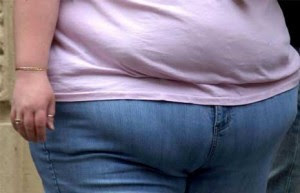
I have been receiving a rash of phone calls over the last couple of days, both by the press and from my patients, asking me to address concerns regarding the possibility of the United States being exposed to radioactive fall out should there be a major leak of radiation from Japans crippled nuclear power plants. I have also received phone calls from concerned citizens and doctors asking if I know where they can get Potassium Iodide (KI) .
In the event of exposure to high amounts of radiation the CDC is currently recommending the following dosages for KI:
-Adults should take 130 mg (one 130 mg tablet OR two 65 mg tablets OR two mL of solution).Women who are breastfeeding should take the adult dose of 130 mg.
-Children between 3 and 18 years of age should take 65 mg (one 65 mg tablet OR 1 mL of solution).
-Children who are adult size (greater than or equal to 150 pounds) should take the full adult dose, regardless of their age.
-Infants and children between 1 month and 3 years of age should take 32 mg (½ of a 65 mg tablet OR ½ mL of solution). This dose is for both nursing and non-nursing infants and children.
-Newborns from birth to 1 month of age should be given 16 mg (¼ of a 65 mg tablet or ¼ mL of solution). This dose is for both nursing and non-nursing newborn infants. These dosages should not continue after 14 days.
However, many doctors, including myself, our concerned that people will begin taking KI when no real risk of contamination exist. The problem is that high amounts of KI, over an extended period of time, can be toxic to the thyroid. The purpose of taking KI, is that it blocks the thyroid from taking up radioactive Iodide in the atmosphere that can cause cancer.
Currently, while radiation has not hit the shores of the United States, I am recommending that people keep KI in their emergency disaster earthquake ready kits simply as a precaution. I am not recommending they start taking it–as it simply poses too many health risk–except in the event that we experience radioactive fall out.
Here is what KI cannot do, it cannot protect your body, and its organs, from the severe and devastating consequences of high dose radiation exposure. Long term exposure to radiation can lead to several medical problems. If the radiation exposure is high enough it can lead to death within a few days or weeks. Lower dose radiation, over time, can lead to various types of cancers such as Thyroid, Lung, Skin, Multiple myeloma, Breast Cancer, and Stomach Cancer.
Natural remedies to protect the body from radiation do exist, and they are not harmful to the body. The most noted case of natural treatments for radiation exposure come from Dr Tatsuichiro Akizuki MD, who was the Director of the Department of Internal Medicine at St. Francis Hospital in Nagasaki, a hospital that was 2 miles from the atomic bomb blast. Operating with only a generator for power, the hospital was only able to feed its patients brown rice, Miso soup and seaweed. Akizuki noted that none of his staff or patients succumbed to radiation sickness. This diet offered protection from radiation exposure probably for a few reasons. First, the seaweed contained high amounts of iodine, which protected the thyroid from radiation. The second is that miso soup (a fermented soy bean paste popular in Japanese cooking), contains an ingredient known as Zybocin. Zybocin was discovered in 1972 and is believed to be an agent that can bind to radioactive elements and help rid it from the body.
Because radiation can cause substances known as Reactive Oxidative Species or ROS–they can cause damage to our cells and lead to cancer. Therefore, any foods high in antioxidants can be beneficial. these include the antioxidants themselves, Vitamin E (Avoid DL-alpha-Tocopheral as it is synthetic), Beta Carotene, Vitamin C, Selenium and Zinc. Foods high in antioxidants include vegetables, green tea, berries, like blueberries and pomegranates, and greens products like spirulina and chlorella.
The Anti-Radiation Diet
Believe it or not, there is such a diet. We recommend the following foods (they can be taken daily and will not harm you).
* Miso Soup Daily
* Spirulina, chlorella and algaes (like kelp) for their anti-oxidant properties and their high mineral and Iodide content.
*Brassica Vegetables (these are vegetables in the mustard family that help protect the liver and include kale, broccoli, mustard greens, cauliflower, Brussels sprouts, turnips and rutabagas)
*Minerals like Potassium, Calcium and Mineral rich foods
*Cod liver oil and olive oil
*Drink plenty of green tea
* Consider taking supplements like Reishi, Astragalus, Panex ginsing, Rhodiola, and Ashwaganda, these herbs protect immune health and are strong anti-oxidants. these plants can both protect the body from making carcinogenic (cancer causing substances), as well as protect the cells from developing into cancer in the first place.
*Avoid junk food and processed foods like sweets. These foods burn quickly (creating oxidative stress to the cells) are not nutritious and can add additional strain to the body as it attempts to rid itself of toxins.
Hopefully, these precautions will be unnecessary but by presenting the best possible, and safest options, for protecting ourselves, we can be better informed and better prepared should such an emergency ever happen.














